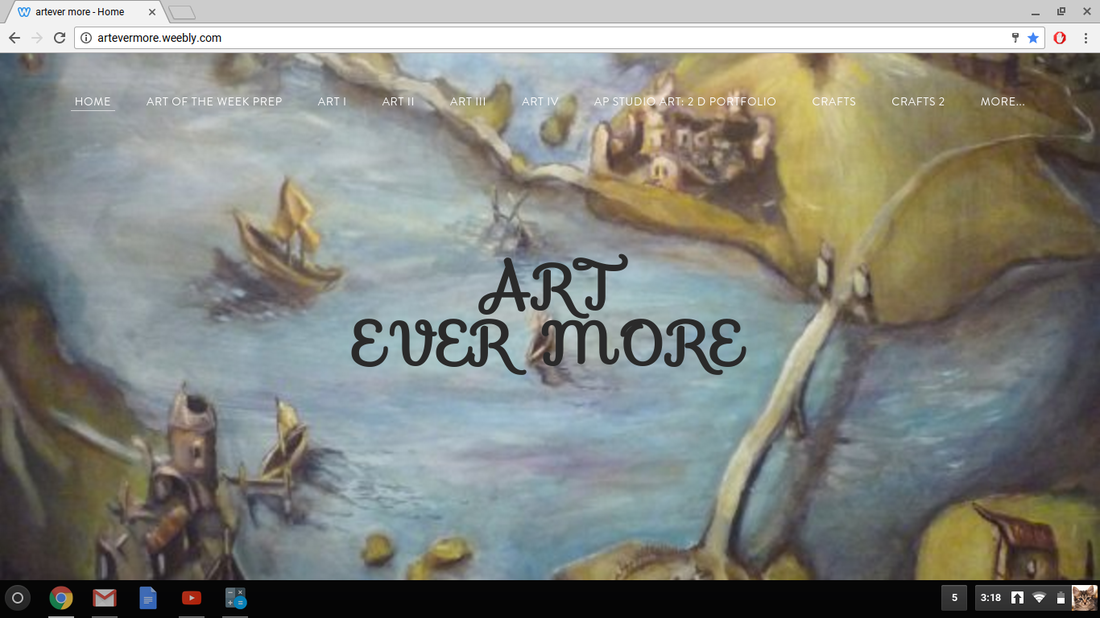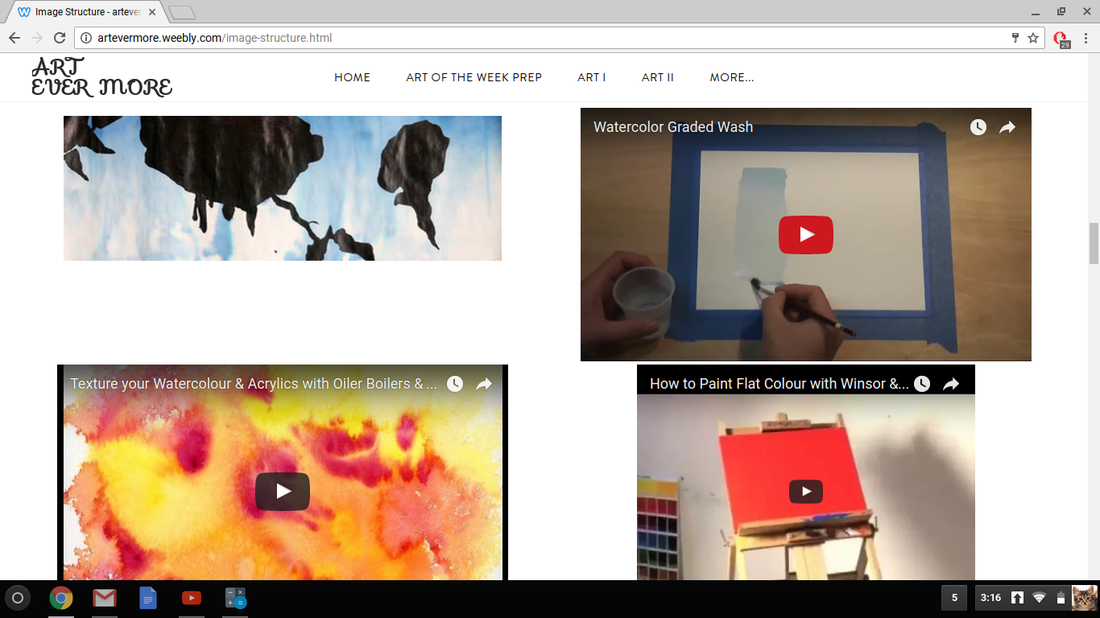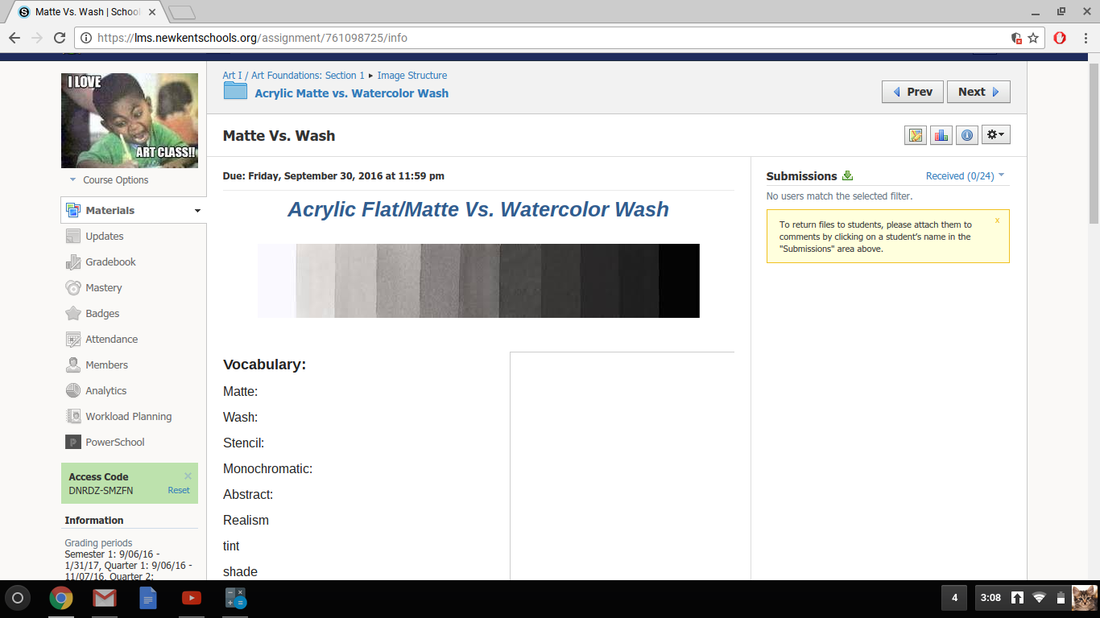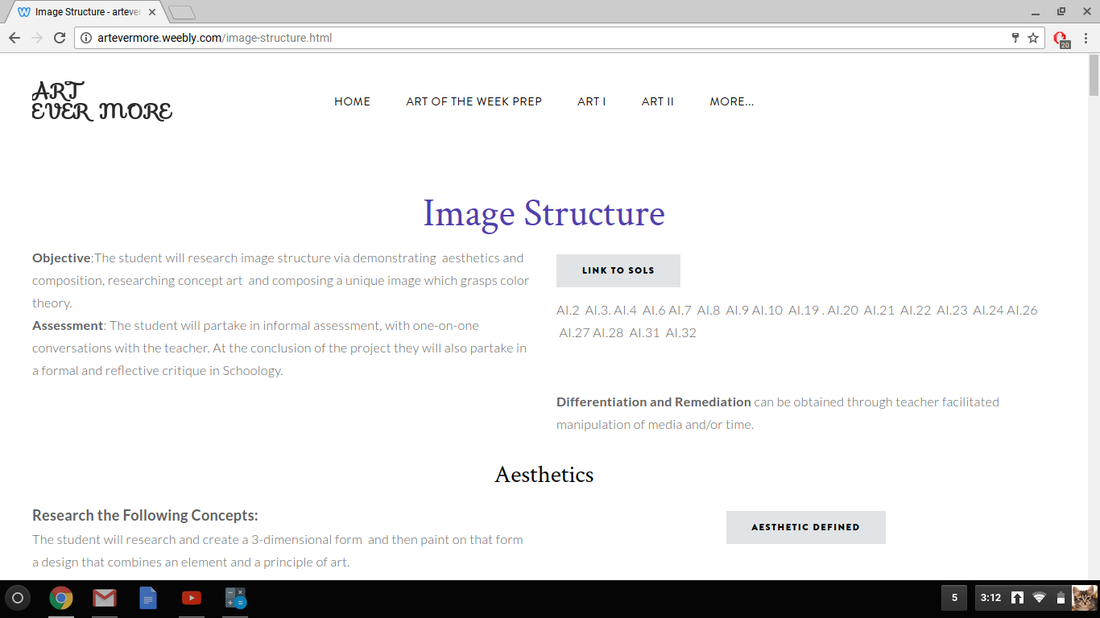Teaching From Your Website |
| ||
Working Digitally
Teaching from your website has pros and cons. As the practice of teaching continues to incorporate new technologies, so should teachers. While building the website might be time consuming, it can permit accountability, efficiency and advocacy in a 21st century learning environment. It is my hope that this professional development can help teachers to connect their students with the greater digital world with ease.
Pros |
Cons |
|
|
|
If all of your resources are online and permanent, students can be held accountable for their lessons and work even in extended absences.
|
Websites do take time to prepare, design and upload. Luckily templates like Weebly, Wix and Google Sites make much of this process intuitive and as simple as copy pasting information.
|
Efficiency |
Internet Reliance |
|
When a teacher has all of their resources uploaded, organized and planned their classroom becomes transparent and content understandable. Students operate well when they understand the objectives and can see the end goal with clarity.
|
Working from your website will involve technology and wifi or data. This is a case by case situation depending on the school system and resources. However, as long as a teacher has a projector they can use their website as a digital blackboard.
|
21st Century Resources |
Blocks |
|
Using 21st century technology has become a requirement in many districts. Building your website not only helps for organizing the classroom and content but also meets this standard.
|
Some schools have blocks on their system that might prevent your students seeing your site. This problem is easily remedied when talking with whoever is in charge of software and technology in your school system.
|
Living Without Worksheets
In using your website, you no longer have the burden of worksheets. My classroom operates in the digital sphere and in the students' sketchbook. Getting rid of worksheets takes the bureaucracy out of the classroom and gives students the opportunity to organize their thoughts independently.
Worksheets typically have a "right answer." Jamaica is expected to circle the rhyming words or match the pictures of things that start with the letter "G." She may learn quickly that putting down a wrong answer is emotionally costly. Worksheet activities may make her feel ignorant and incompetent, so that she learns to stop taking risks by guessing. - Sue Grossman
Process: The How To Guide
While I am biased towards Weebly, here are a few videos on my favorite web builder along with Wix and Google Sites
|
|
|
|
Keep Your Head Above Water: Don't Reinvent the Wheel
Your website should be an AMALGAMATION of resources, i.e. you should use a variety of resources to teach your assignments. You do not have to create a YouTube video of every tutorial, when there are thousands out there to choose from. I see it as inviting guest artists into my classrooms. Since I have begun this, students have felt it was safe to research tutorials to help them solve their own creative projects.
|
Some strategies your can use that also reflect scaffolding:
|
Double Dip
Does your school have a program already in place that they want you to use? You can still use your website by copy pasting information from your website into this resource.
Example on Website |
Copied into Schoology |
Digital Advocacy
Your website can be shared outside of your classroom as a reflection of your classroom environment and advocate for your content area. One way I like to advocate for my discipline is include links to the relevant standards within my unit. While parents, students, administrators see the same page, each finds the information they are looking for. This justifies my content and
Creating a Culture of Student Independence and Self Advocacy
In a culture of digital transparency all students should learn the effects of positive and negative online presence. Creating an artist portfolio that students maintain from introductory to higher levels of Art not only helps online presence, but also helps students in preparation for art careers after high school.





